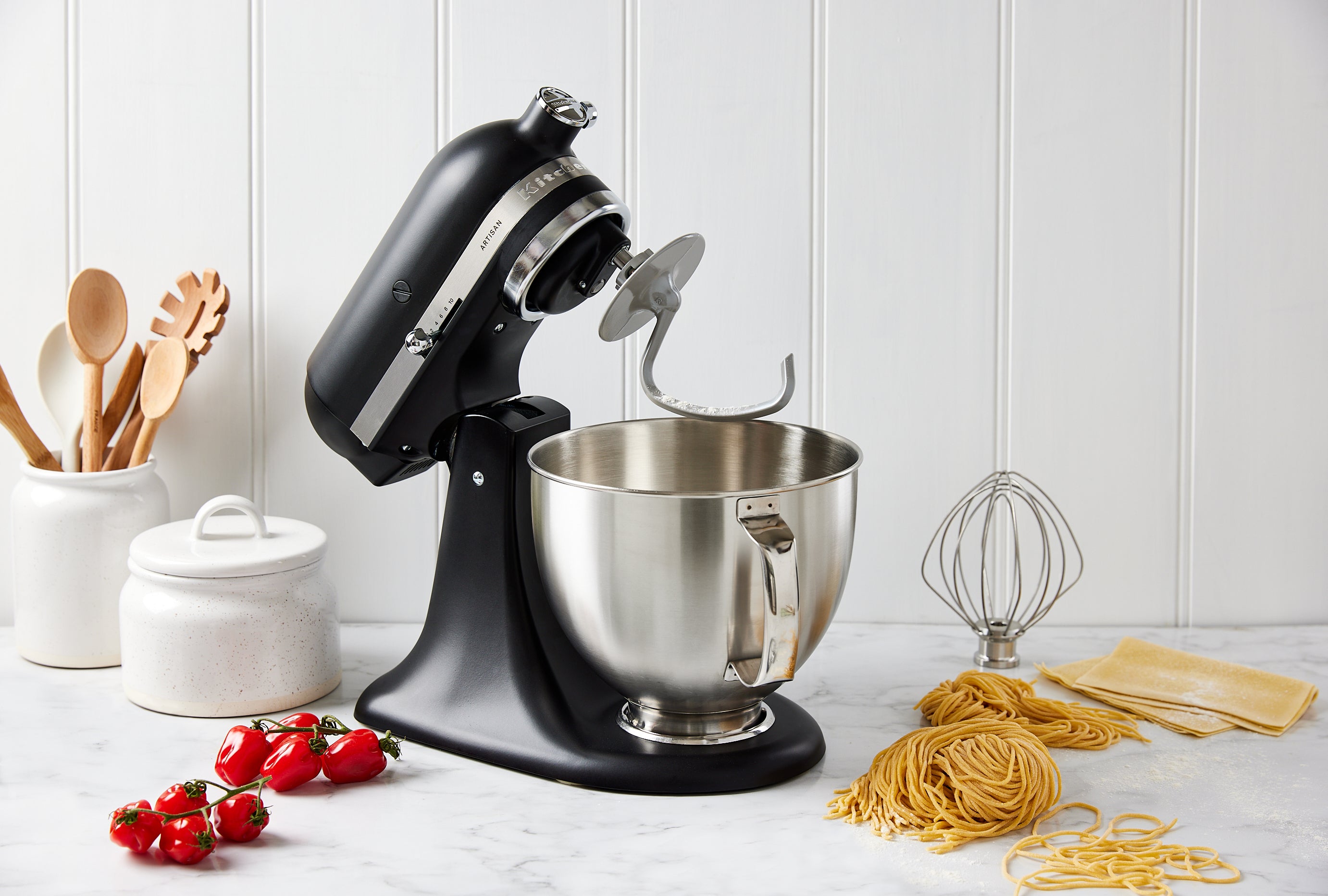As KitchenAid’s In-house maker, one of the most commonly asked questions is what speed do I use for…. Creaming butter and sugar, whipping cream or using attachments. Mastering the speed control on your stand mixer will unlock your creativity and you will be making the most out of your stand mixer and attachments in no time
KitchenAid stand mixers have 10 speeds, with the exception of our bowl-lift mixers KSM60 and KSM70 which both have an additional speed, a ½ speed for folding in delicate ingredients. Each speed having a specific use, mastering the stand mixer speeds will ensure you get the most out of your mixer. The handy chart below gives you a guide as to what each speed is used.
| SPEED | ACTION | ACCESSORY | DESCRIPTION |
|---|---|---|---|
| 1 | Stir | Flat Beater, Flex Edge Beater | It all starts with stir. The key to ideal results is to always begin with stir, gradually ramping up the speed on your mixer from the start will ensure consistent results as well as prevent puffs of flour from wafting into the air. |
| 2 | Stir | Pastry beater | Cut butter into flour to make pastry dough; Mash fruits and vegetables. |
| Slow mixing | Flat Beater, Flex Edge Beater | Speeds 2 and 3 generally are considered low speed, so use these if your recipe calls for low or medium-low speed. These speeds are perfect for jobs like slow mixing splashy batters, mashing, pulling meat or kneading doughs. | |
| Dough hook | Only use speed 1-2 for doughs | ||
| 4 | Mixing, beating | Flat Beater, Flex Edge Beater | Speeds 4 and 5 are best for recipes calling for mixing or beating on medium. These speeds are ideal for mixing cake batters, cookie doughs, or the first stages of making a meringue. |
| Pastry beater | For shredding meats | ||
| Wire whip | For adding sugar to egg whites for meringues. | ||
| 6 | Beating, creaming | Flat Beater, Flex Edge Beater
|
When recipes call for medium high speed, use speeds 6 and 7. This is the best speed for beating and creaming, as well as whipping ingredients to create batters |
| Wire whip | For medium-fast whipping of ingredients requiring incorporation of air, such as egg whites. | ||
| 8 | Fast beating, whipping | Wire whip | When whipping cream or eggs to create perfect peaks, you’ll want to use speeds 8 to 10 for the dreamiest cloud-like results. For a meringue or boiled frosting with stunning swoops and peaks, be sure to use the whisk attachment. |
Speeds for the most commonly used applications
Kneading dough
When making a batch of bread dough, pizza dough or pasta dough the kneading is best done on speed 2. Kneading dough is a gentle action so there is no need to be tempered to turn the mixer to a higher speed. Exceeding speed 2 could damage your mixer. Mix until the dough is smooth and elastic and the mixture is not clinging to the bowl. Kneading dough mixtures should take no longer than 2-3 minutes.
Creaming Butter and Sugar
When creaming butter and sugar always use the flat beater or flex edge beater, start the mixer on speed 2 to combine the ingredients then increase speed to 4-6 to achieve light, fluffy results.
Whipping Meringues
For silky, soft smooth meringue, speeds 6-8 are ideal, always use the wire whisk to achieve the best results
Speed for using attachments
All our attachments have recommended speeds, which can be found in the user manual for each specific product.



